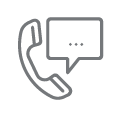
Medicine, perhaps more than any other profession, replies upon well-maintained and up-to-date equipment — the purpose and workings of which are likely to mystify laymen. Whether one is looking to update a domestic first aid box, or to get a deeper understanding about the role of a specific medical device, this list covers some of the most commonly used equipment.
Blood Pressure Monitor
A blood pressure monitor, or sphygmomanometer, can be found in essential GP supplies, hospitals, and for personal use. As the name suggests, this device measures a person’s blood pressure; specifically, it measures the pressure of blood in arteries. Most monitors come in a digital form and are used by wrapping an inflatable cuff around the upper arm.
The monitor will then display two numbers: the first is called systolic pressure, which is the pressure at the highest, the second is diastolic pressure or the lowest pressure. An ideal blood pressure reading is anywhere between 90/60mmHg and 120/80mmHG. A healthy blood pressure reading is considered to be 140/90 mmHg.
Those with low blood pressure will measure below 90 for a systolic and below 60 for diastolic pressure. A high blood pressure reading is anything above 140/90mmHg. Being aware of blood pressure is essential since it will put extra strain on the heart, blood vessels, and other organs, making the risks of developing threatening diseases more likely.
Stethoscope
A stethoscope is used for auscultation, which means listening to the sounds of a body. The device will usually have two earpieces which are connected to a circular resonator which is placed against the skin. It can be used to listen to the heart, lungs, intestines or blood flow; the internal sound makes the device vibrate, carrying the sound to the ears of the listener. Since proper use of stethoscopes requires training and practice, they are generally only used by trained health care providers.
Ophthalmoscope and Otoscope
There are other examples of equipment that require training for successful usage. An ophthalmoscope is used to look into the fundus of the eye to assess for retinal vascular diseases, such as glaucoma. An otoscope is used in an ear exam, allowing a view of the ear canal and tympanic membrane and is used to look for diseases as well as a check-up on general ear health.
Pulse Oximeter
This device is one of the most common ways a doctor will check a patient’s pulse. It is a small, lightweight piece of equipment attached to the tip of a finger. A pulse rate is an estimation as to the number of times the heart contracts per minute. A healthy pulse rate for an adult ranges from 60 to 100 beats per minute.
What makes this device preferable to other pulse monitoring systems is because it also measures oxygen levels. Sending two wavelengths of light through the finger, it can measure both the pulse rate and the levels of oxygen in the body. A healthy oxygen reading is considered to be 95%, anything below 92% could be a symptom of health problems. The speed and simplicity of this device make it a great piece of equipment for both professional and at-home use.



















